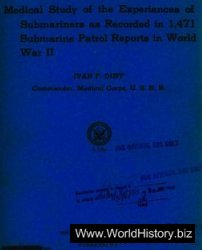In the twelfth and thirteenth centuries, a vast body of philosophical and scientific literature by Greek and Arabic authors was translated from Arabic into Latin. The translation movement peaked with the School of Toledo in the twelfth and the court of Frederick II in the thirteenth century. In the area of philosophy, categories of texts translated include (1) Greek works (mostly by Aristotle and his commentators) previously translated into Arabic,
(2) summaries and quaestios by Greek and Arabic authors which deal with questions arising from Aristotle’s works,
(3) systematic treatises on falsafa (most importantly Avicenna’s Shifa’ (Cure) and al-GGazali’s Maqasidal-falasifa (Intentions of the Philosophers)), (4) commentaries (most importantly, Averroes’ commentaries on Aristotle), (5) doxography (Burnett 2005:370-371). The recovery of Aristotle’s books via Arabic happened at about the same time as the Latin translation of his works from Greek by James of Venice (fl. 1125-1150) and Burgundio of Pisa (d. 1193). The Arabic versions had the advantage of bringing with them a much longer tradition of interpretations, that is, in addition to the late antique works mainly of
Alexander of Aphrodisias and Themistius, those by the Arabic authorities. Sometimes it was through the lemmata in Averroes’ Long Commentaries that a work by Aristotle became widely available to the Latin readers, as was the case with the Physics, De anima, and the Metaphysics, whose Graeco-Latin 'vetus’ translation was in a sense superseded by Michael Scot’s translations of Averroes’ commentaries. On the other hand, the De caelo became available for the first time through the translation of Averroes’ commentary.
Not unlike the Greco-Arabic translation movement in ‘Abbasid Baghdad in the eighth-tenth centuries, the origins of the Arabo-Latin translation movement lay in an interest in science and medicine. The geographical center was in the north-western Mediterranean where, in the late tenth century, Latin texts about astrology including excerpts from Arabic works circulated in Catalonia. The first well-known translator was Constantine the African (d. before 1098-1099), who brought books about medicine from Kairouan to the medical school in Salerno and then to the Benedictine monastery of Montecassino where he translated them. This project was continued in the first half of the twelfth century by Stephen of Antioch in Pisa. In addition to texts by Isaac Israeli (ninth-tenth centuries) and his disciple Ibn al-Jazzar, the most important of these works was the Pantegniby 'All b. al-'Abbas al-MajusI (Haly Abbas). The translators went beyond the area of medicine with their interest in texts about natural science and established thereby a new field of learning which supplemented the seven liberal arts of the traditional curriculum. Alongside philosophy which gained importance in subsequent years, medicine and science, in particular astronomy and astrology, remained important areas of translation.
It was in the second quarter of the twelfth century that the interest in philosophy increased due to the attention devoted to it at the School of Chartres which already aimed at a combination of Plato’s and Aristotle’s doctrines, a tendency which was later supported by the philosophical literature translated from Arabic. Apart from northern Italy, the translators were active in modern-day Spain and France. The most famous among them were Hermann of Carinthia (fl. 1138-1143), Robert of Ketton (fl. 1141-1156), Rudolph of Bruges (fl. 1144), Hugo of Santalla (fl. 1151), and Raymond of Marseilles (fl. 1141). Hermann’s own De essentiis (1143) was inspired by Arabic sources; his five essences (cause, movement, place, time, and habitudo) have parallels in works by Abu Bakr al-RazI, Pseudo-Apollonius, and al-Kindl. Furthermore, Hermann cites Abu Ma'shar’s Great Introduction to Astrology which he had translated three years before composing De essentiis.
Another trend that can be identified in this context is the significance of anti-Islamic polemics. In 1141, Robert of Ketton translated for Peter the Venerable of Cluny various Islamic texts, among them the Qur’an and the Apologia of al-Kindt (a tenth-century Christian, not to be confused with the Muslim philosopher of the ninth century mentioned above). The more literal translation of the Qur’an that Mark of Toledo completed in around 1210 had far less influence; it was Robert’s translation that was printed for the first time in 1543. Even though the polemical tradition thus persisted, the Muslim identity of most Arabic philosophers did not constitute a problem for Christian translators and interpreters who challenged their views on purely philosophical grounds. Furthermore, works which Arabic authors had written on genuinely Islamic matters were not translated into Latin, which explains why, for example, Averroes as the author of the philosophical and medical texts translated into Latin is somewhat different from Ibn Rushd as the author of a much larger corpus of texts in Arabic.




 World History
World History









